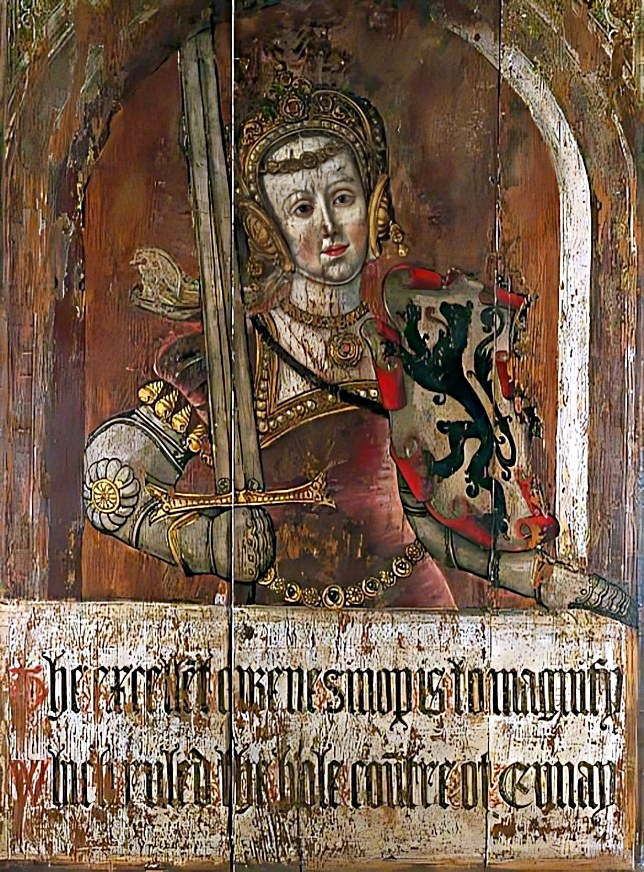
The allegory of Armenia in the 16th-century English panel as an embodiment of female courage and dignity
Lambert Bernardi (c.1485–1567) was an English Renaissance painter who created a series of allegorical portraits that came to be known as the Amberley Panels. These panels, measuring 155 by 86 centimeters each, comprising eight extant oak wood panels painted in a mixture of oil and egg tempera, depict virtuous ladies who exemplified courage and dignity in the face of adversity. Each panel portrays a woman holding weapons, symbols, or heraldic shields, with a gentle smile on her face and a specific symbol or weapon attributed to her. The women depicted in these panels are adorned in attire typical of the 1500s, characterized by heavy golden necklaces and gowns of red velvet or black and gold woven damask. The themes and subjects of the panels are allegorical, aimed at conveying moral messages to the viewers while reflecting the political and social values of the era.
Additionally, the Amberley Panels were commissioned by Robert Sherborne, the Bishop of Chichester, to commemorate the visit of King Henry VIII in 1526.
Interestingly, among the portraits is Queen Sinope, Ruler of Armenia, who embodies Armenia and is holding a sword and a shield-like scroll with the image of a lion, reminiscent of the Coat of Arms of the Armenian Kingdom of Cilicia during the reign of the Hethumid dynasty.
In Greek mythology, Sinope was one of Asopus’s daughters and is believed to be an eponym for the city of Sinope on the Black Sea, which is currently located in Turkey. Besides, according to the Armenian Patriarchate of Constantinople, 5,266 Armenians lived in six localities of Sinope before the Armenian genocide and the onset of the First World War. These Armenians maintained five churches and four monasteries in the region.
It’s noteworthy that these works of art have been recovered and are now displayed at the Pallant House Gallery, Chichester, UK. The collection is significant as it constitutes rare examples of English provincial art of the 16th century.








